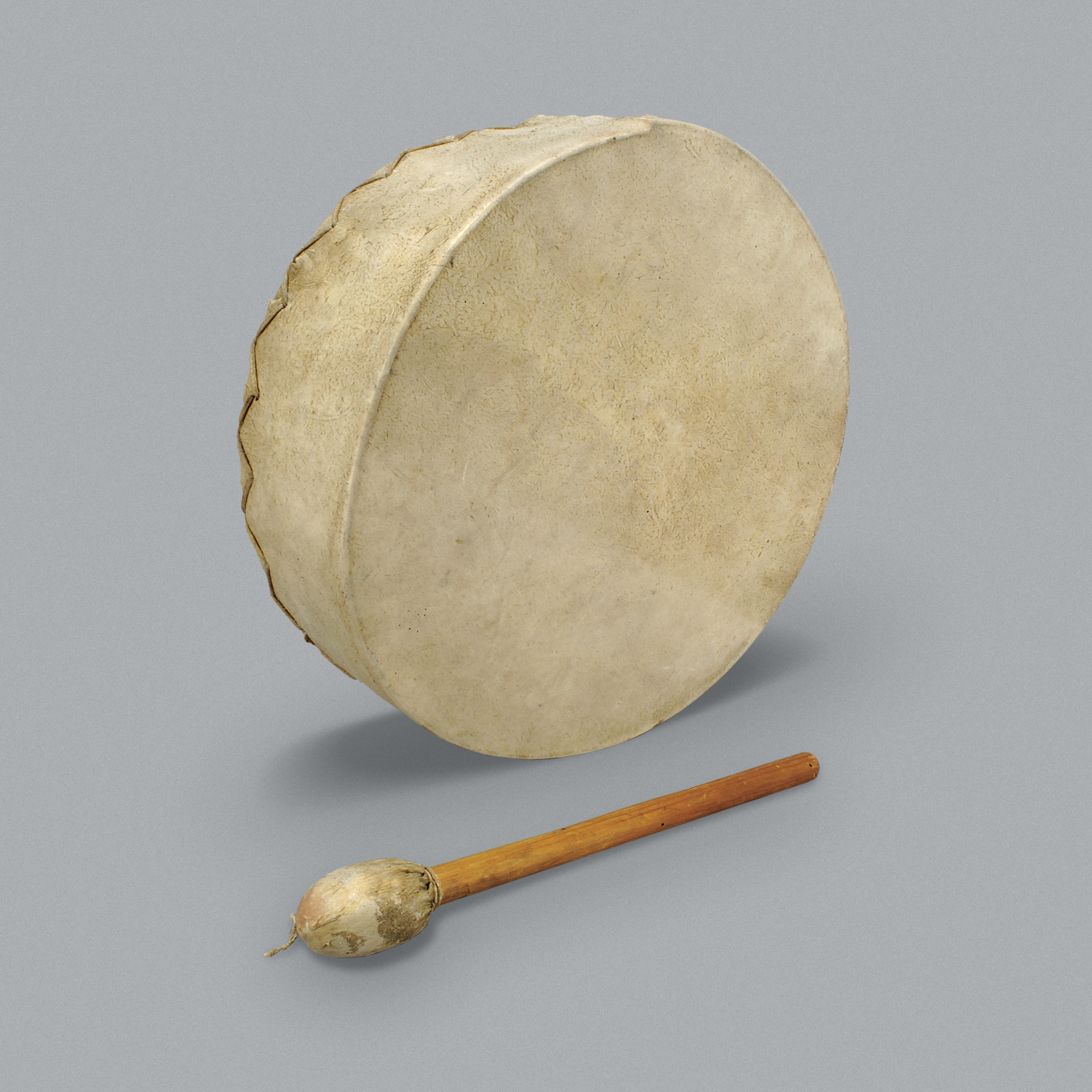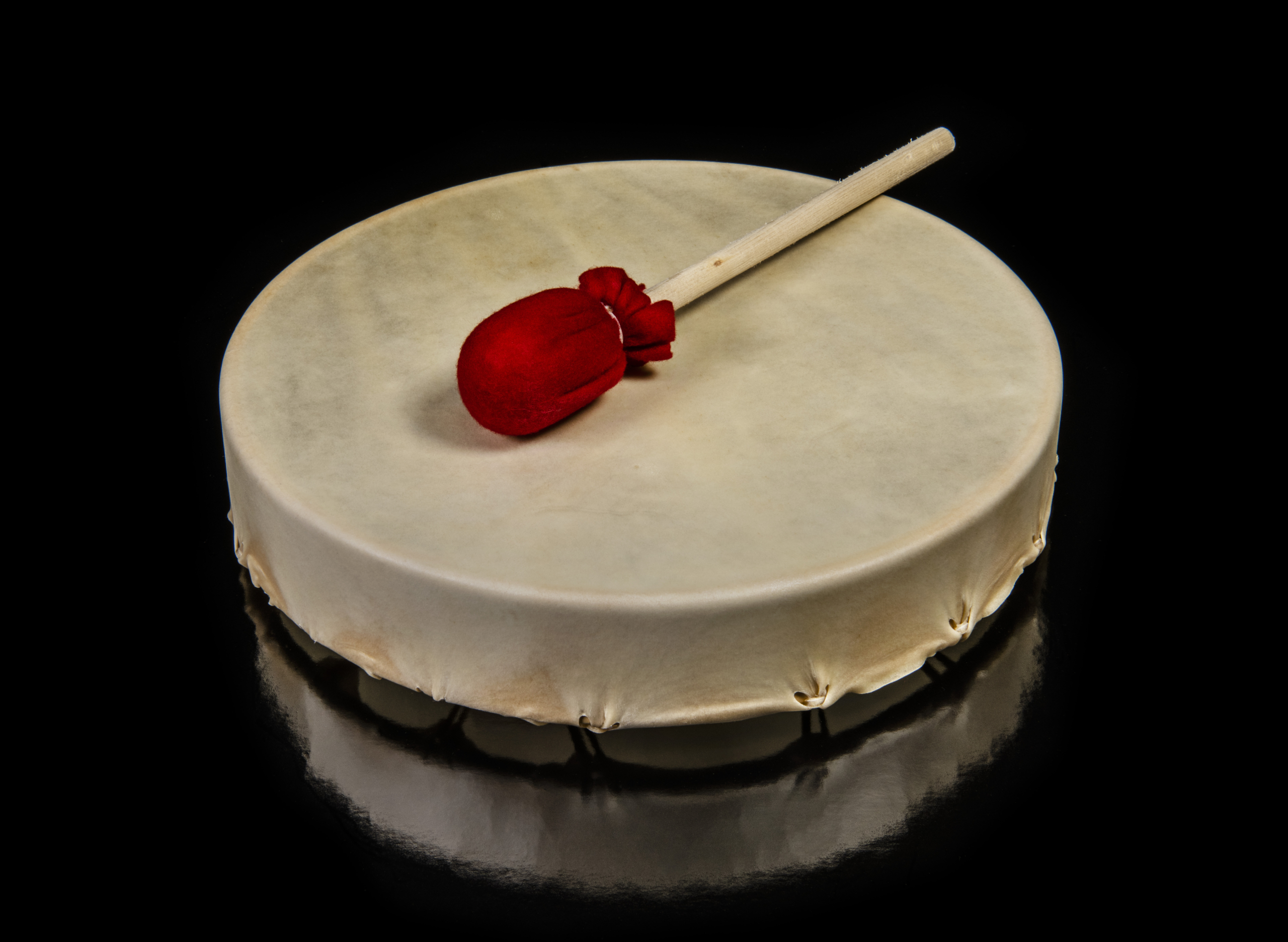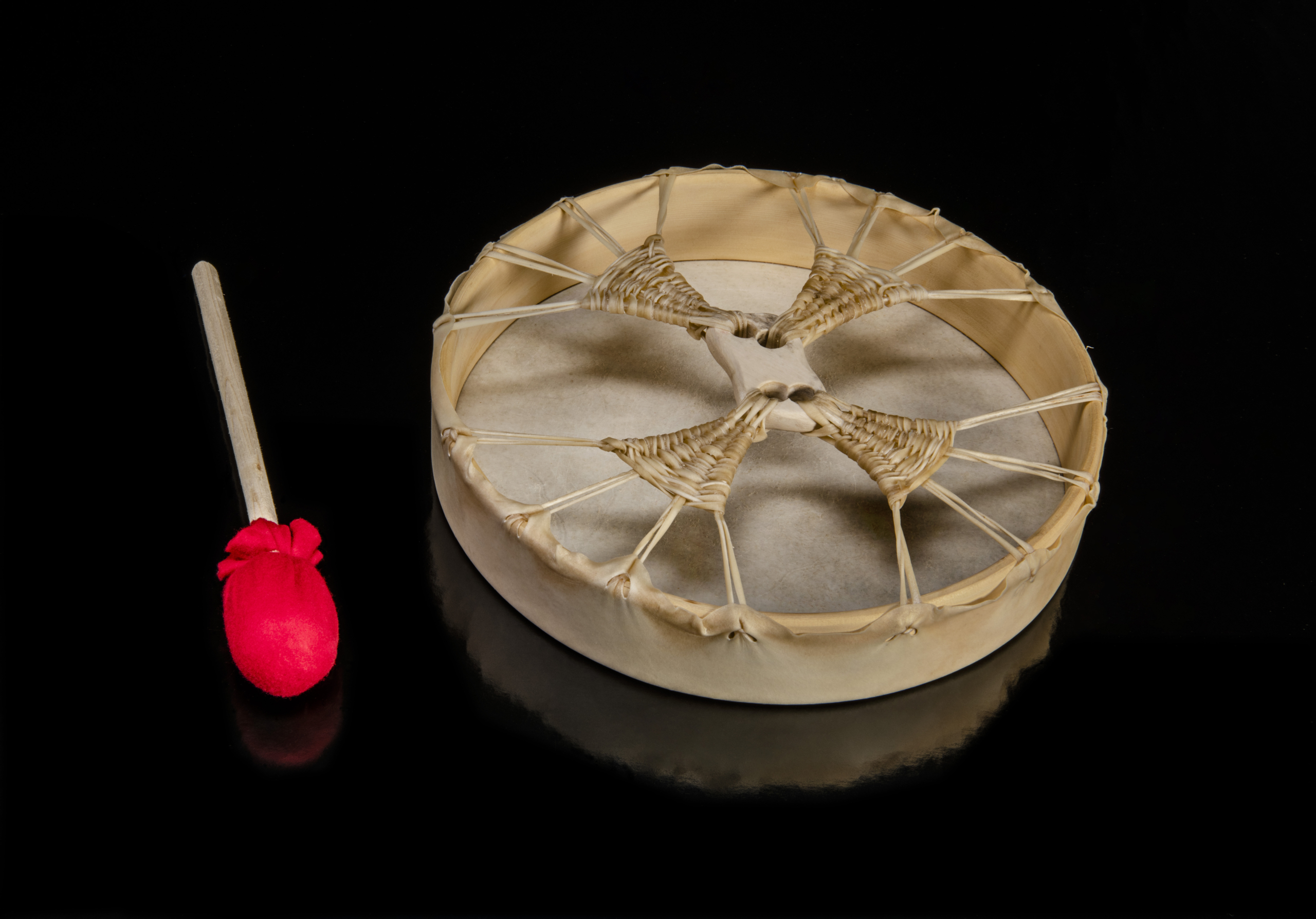Mi’kmaq Drum
Artifact
Image
Video
Audio
 Activities
Activities
LOOK
Look closely at this object. What do you think it’s made of? Verify your answer by reading the Historical Context below.
THINK
Watch the interview with Todd Labrador, the artist who made Mi’kmaq drums for the History Box. If you could ask him any questions, what would they be?
Details
 Materials
Materials - Wood
- Mammal Skin
- Ochre
Historical Context
Choose one of the three levels below to match your needs.
- This is a Mi’kmaq drum made of yellow cedar, elk skin and moose antler.
- The Mi’kmaq people have inhabited Canada’s Atlantic coast for thousands of years.
- Ceremonies, festivals and gatherings play an important part in Mi’kmaq society. Many such events include singing, dancing and drumming.
Scroll through the media carousel above to see three photos of the drum included in the History Box, as well as an interview with the artist, Todd Labrador.
This is a Mi’kmaq drum made of yellow cedar, elk skin and moose antler.
The Mi’kmaq people have inhabited Canada’s Atlantic coast for thousands of years. A hunter-gatherer-fisher society, Mi’kmaq relied on the myriad plants, animals and fish in their surroundings for their survival.
Ceremonies, festivals and gatherings play an important part in Mi’kmaq society. Many such events include singing, dancing and drumming.
This is a Mi’kmaq drum made of yellow cedar, elk hide and moose antler.
Mi’kmaq have inhabited Canada’s Atlantic coast for thousands of years, living in the provinces we know today as Newfoundland and Labrador, Quebec, Nova Scotia, New Brunswick and Prince Edward Island, as well as in the U.S. state of Maine. A hunter-gatherer-fisher society, Mi’kmaq relied on the myriad plants, animals and fish in their surroundings for their survival. They used large birchbark canoes, like the one featured in the Canadian History Hall, to travel, fish and hunt at sea.
As in many Indigenous cultures across Canada, ceremonies, festivals and gatherings play an important role in Mi’kmaq society. Many events include singing, dancing and drumming.
The drum in this kit was made by Todd Labrador, a Mi’kmaq Elder and artist who lives in Nova Scotia.
- This is a Mi’kmaq drum made of yellow cedar, elk skin and moose antler.
- The Mi’kmaq people have inhabited Canada’s Atlantic coast for thousands of years.
- Ceremonies, festivals and gatherings play an important part in Mi’kmaq society. Many such events include singing, dancing and drumming.
Scroll through the media carousel above to see three photos of the drum included in the History Box, as well as an interview with the artist, Todd Labrador.
This is a Mi’kmaq drum made of yellow cedar, elk skin and moose antler.
The Mi’kmaq people have inhabited Canada’s Atlantic coast for thousands of years. A hunter-gatherer-fisher society, Mi’kmaq relied on the myriad plants, animals and fish in their surroundings for their survival.
Ceremonies, festivals and gatherings play an important part in Mi’kmaq society. Many such events include singing, dancing and drumming.
This is a Mi’kmaq drum made of yellow cedar, elk hide and moose antler.
Mi’kmaq have inhabited Canada’s Atlantic coast for thousands of years, living in the provinces we know today as Newfoundland and Labrador, Quebec, Nova Scotia, New Brunswick and Prince Edward Island, as well as in the U.S. state of Maine. A hunter-gatherer-fisher society, Mi’kmaq relied on the myriad plants, animals and fish in their surroundings for their survival. They used large birchbark canoes, like the one featured in the Canadian History Hall, to travel, fish and hunt at sea.
As in many Indigenous cultures across Canada, ceremonies, festivals and gatherings play an important role in Mi’kmaq society. Many events include singing, dancing and drumming.
The drum in this kit was made by Todd Labrador, a Mi’kmaq Elder and artist who lives in Nova Scotia.
Summary
- This is a Mi’kmaq drum made of yellow cedar, elk skin and moose antler.
- The Mi’kmaq people have inhabited Canada’s Atlantic coast for thousands of years.
- Ceremonies, festivals and gatherings play an important part in Mi’kmaq society. Many such events include singing, dancing and drumming.
Scroll through the media carousel above to see three photos of the drum included in the History Box, as well as an interview with the artist, Todd Labrador.
Essential
This is a Mi’kmaq drum made of yellow cedar, elk skin and moose antler.
The Mi’kmaq people have inhabited Canada’s Atlantic coast for thousands of years. A hunter-gatherer-fisher society, Mi’kmaq relied on the myriad plants, animals and fish in their surroundings for their survival.
Ceremonies, festivals and gatherings play an important part in Mi’kmaq society. Many such events include singing, dancing and drumming.
In-Depth
This is a Mi’kmaq drum made of yellow cedar, elk hide and moose antler.
Mi’kmaq have inhabited Canada’s Atlantic coast for thousands of years, living in the provinces we know today as Newfoundland and Labrador, Quebec, Nova Scotia, New Brunswick and Prince Edward Island, as well as in the U.S. state of Maine. A hunter-gatherer-fisher society, Mi’kmaq relied on the myriad plants, animals and fish in their surroundings for their survival. They used large birchbark canoes, like the one featured in the Canadian History Hall, to travel, fish and hunt at sea.
As in many Indigenous cultures across Canada, ceremonies, festivals and gatherings play an important role in Mi’kmaq society. Many events include singing, dancing and drumming.
The drum in this kit was made by Todd Labrador, a Mi’kmaq Elder and artist who lives in Nova Scotia.



